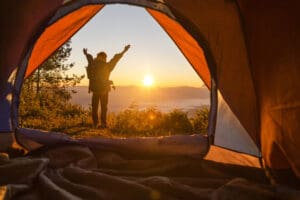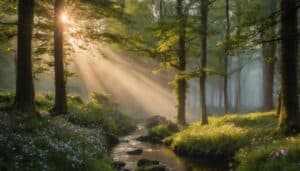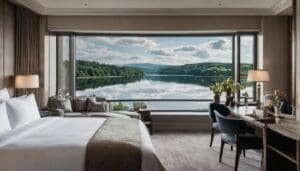Galapagos Islands: 10 Reasons to Visit These Stunning Islands
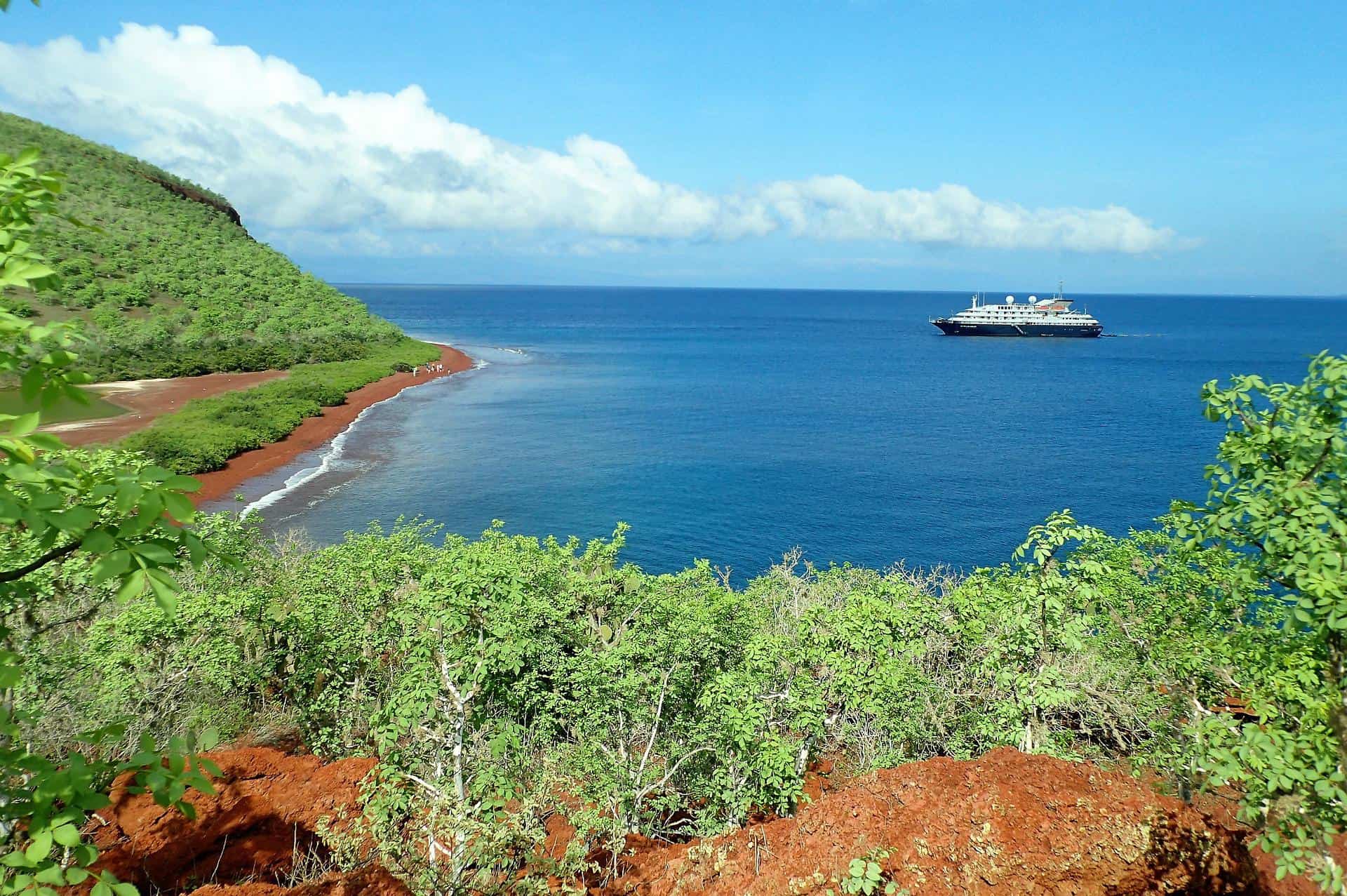
Updated On: November 08, 2023 by Ciaran Connolly
Galapagos Islands are an island group located in the eastern Pacific Ocean. The Galapagos is made up of 13 major islands, 6 smaller islands, and scores of little islands and rocks. Their entire land area of 3,093 square miles is spread over 23,000 square miles of ocean. The government of Ecuador specified part of the Galapagos as a wildlife sanctuary in 1935, then in 1959, the sanctuary changed into the Galapagos National Park. In 1978 the islands were listed as a UNESCO World Heritage site, and in 1986 the Galapagos Marine Resources Reserve was formed to protect the surrounding waters. The Charles Darwin Research Station on Santa Cruz Island encourages scientific studies and secures the indigenous vegetation and animal life of the Galapagos.
The Galapagos Islands are composed of lava piles and marked with shield volcanoes, many of which are occasionally active. The striking thickness of the dry landscape is highlighted by high volcanic mountains, cliffs, and craters. Isabela is the largest of the islands. It is about 82 miles long and includes more than half of the entire land area of the archipelago. It contains Mount Azul which is the highest point of the Galapagos Islands. Santa Cruz is the second-largest island.
In 1535, the bishop of Panama, Tomás de Berlanga, is the one who discovered The Galapagos Islands when his ship had sailed off course while on way to Peru. The Galapagos were used by whale and seal hunters and by pirates. In 1832, Ecuador took official control of the archipelago. The islands became internationally recognised due to the visit of the English naturalist Charles Darwin in 1835.
How to Get to the Galapagos Islands?
The only way for visitors to get to the Galapagos Islands is by air. Visitors have to fly from mainland Ecuador to Galapagos Island. Cruise or ferry services are not available. It is recommended to decide your way of exploration before you go, whether by land or sea. There are Galapagos cruises and Galapagos land tours which need certain arrival dates. You also need to choose your departure destination, Guayaquil or Quito. Airline companies do not offer direct international flights to Galapagos. Visitors have to first arrive at mainland Ecuador before their flight to the Galapagos Islands. The Galapagos National Park has severe requirements that airlines must meet.
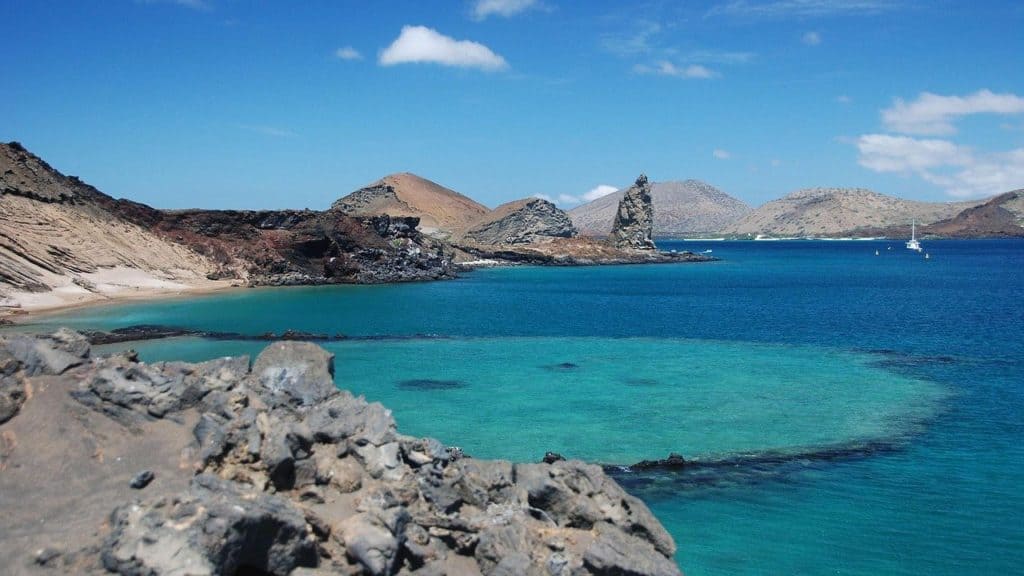
What is the Best Time to Visit Galapagos Islands?
The Galapagos Islands are appropriate for travel and cruises all year round. Each month has its uniqueness. However, the best time to visit the Galapagos Islands is from December to May. It is when the weather is warm and ocean conditions are well-expected. It is ideal weather for snorkelling and diving. There are brief tropical showers which keep vegetation green and wildlife active. From June to November, the cool season, fog replaces tropical showers and trade winds can result in wavy seas. However, It is an ideal time for hiking and exploring active marine life.
The Galapagos warm-season happens from December to May. The temperature varies from 21 C to the upper 26C. This season features sunny days. There is frequent rain that stops in the evening. The rainy season in Galapagos gets the desert landscape to life with dense green leaves resulting in plenty of food for animals. The warm season provides excellent underwater visibility and great snorkelling. The best time for snorkelling is December through May.
The Galapagos cool-season happens from June through November. The average temperatures range from the mid-21 C to the low 16 C. It features cooler days and constant misty fog. Rain is uncommon during the cool season. It is ideal for snorkelling although underwater visibility is reduced, This is the ideal season to view whales, penguins, dolphins, and other big marine animals. Visiting Galapagos in May and November can result in the best of both warm and cool seasons. Shoulder seasons can cause perfect ocean conditions, great weather, and rather few people. Shoulder seasons are great times to explore Galapagos.
Visits are at the maximum during Christmas, Easter and Spring Break holidays. Visits are also at a high rate during the summer when kids are away from school. Prices are at the highest rates and it is recommended to book the flights and tours in advance. The least-visited times of the year, are early December and early January. Galagapos is the least visited in September after the summer season is through.
Top Attractions to Visit in Galapagos
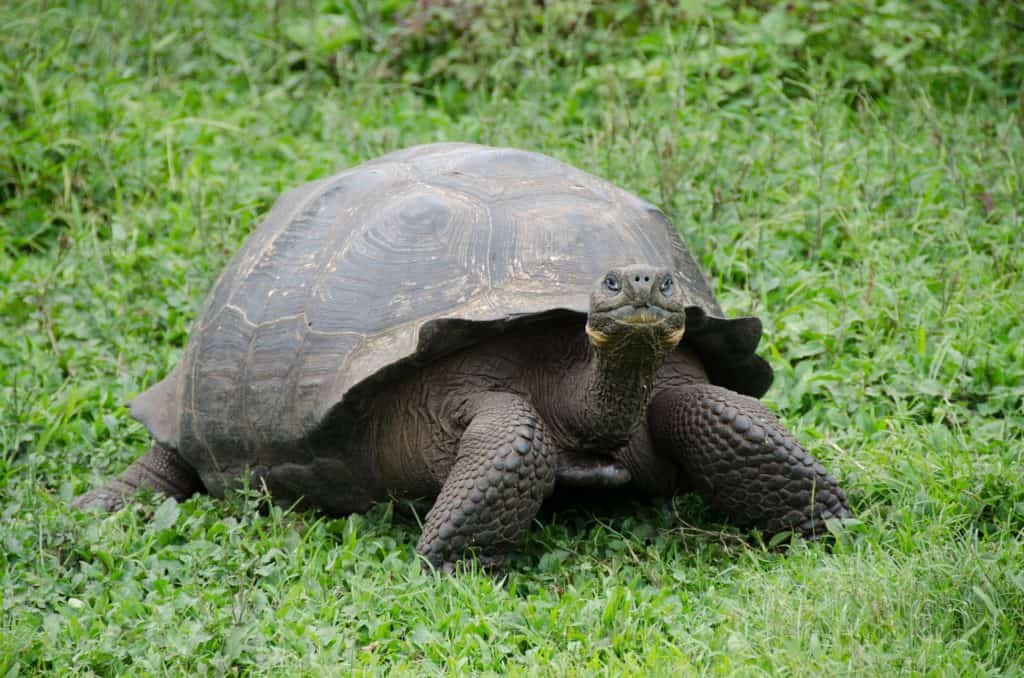
Tortuga Bay Galapagos (Bahia Tortuga): It is a stunning stretch of white coral sand with unspoiled turquoise waters. Tortuga Bay is one of the best Galapagos island beaches. It is an easy beach to visit without spending much money. The best thing about Tortuga Bay is that you can explore it without a guide or transport. The beach is suitable for walking from Puerto Ayora town where you can freely explore the island. The Tortuga Bay Galapagos wildlife is various and abundant. Visitors can enjoy activities including sunbathing, snorkelling and kayaking.
The Tortuga Bay trailhead begins at the end of Charles Binford Avenue to Las Ninfas and hotel Fiesta. Just follow the path for about 30-45 minutes from the trailhead to arrive. The trail is paved and occupied by Palo Santo trees and Opuntia cacti. You can enjoy the walk while viewing Galapagos Mockingbirds flying between the trees. You can also explore the ground, where lava lizards rush around the dry brush habitat. You can also get a boat ride to Tortuga Bay beach from the Puerto Ayora docks. The trip takes about 20 minutes.
Tortuga Bay Galapagos is divided into two sections, the angry (Brava) beach, and the calm (Mansa) beach.
The first thing to see upon arrival is Playa Brava. The most suitable sport is surfing as the currents are strong. It is a dangerous zone where swimming is not allowed.
Playa Mansa is ideal for swimming or sunbathing as it is well protected. It takes about 20 minutes to reach Playa Mansa. Playa Mansa starts with a calm tidal lagoon at the far end of the bay. It is an ideal spot to snorkel exploring small reef sharks and maritime iguanas. Snorkelling and swimming are great fun at Playa Mansa. You can also rent kayaks by the hour. You can also explore a fetching forest of Prickly Pear Cactus, and loads of fascinating Galapagos birds and animals all over the mangroves.
Charles Darwin Research Station (Santa Cruz): It is a must-see spot for young aspiring scientists. This stunning site features an active species centre and informative exhibitions explaining the archipelago’s distinctive ecology and history. Operated by the Charles Darwin Foundation, the centre aims at preserving the variety of the Galápagos Islands through persistent conservation research and paths with over a hundred research assistants, educators and volunteers. Following the paths, you can catch sight of multiple Galapagos huge tortoises. Lonesome George was the only survivor of the Pinta Island giant tortoise subspecies but it died in 2012. You can also watch an informational video about the centre’s mission and conservation efforts inside the museum.
Wall of Tears (Isabela): It is known in Spanish as El Muro de las Lágrimas. the Wall of Tears is one of the most significant historic sites in the Galapagos Islands. The amazing wildlife reflects the prosperous and fascinating human history of the Galapagos Islands. So, it is highly recommended to visit some of these historic sites, including the Wall of Tears. You can get to the Wall of Tears by a sandy path, which turns to rough stone, snaking along close to the shoreline, just outside of Puerto Villamil. There are many explorers, mangroves, beaches, and other attractions along the way.
It is recommended to rent a bike to get to the Wall of Tears. There are various shops in Puerto Villamil and it takes only 1 hour to reach the Wall of Tear. It takes about 2 hours to walk. You can encounter wildlife animals such as tortoises that may be spotted along the way. Taxis are prohibited to bring people in. It is also recommended to get sunscreen, plenty of water and maybe a snack.
This is a self-guided activity which means you are free with no guide. That’s why you need to take good care especially if you ride a bike. You need to be careful of soft sandy spans and potholes along the path. You also need to stick to the paths since there are a lot of prickly flora and sharp lava rocks around that can quickly do some damage.
The Wall of Tears was built over 14 years by prisoners who were sent to Isabela Island in the 1940s and 1950s. It is said that the Wall of Tears caused the death of thousands of prisoners. The wall got its name from Injuries, accidents, exposure and sacrifices from the prisoners who built it. Locals believe the Wall of tears is a haunted place as you can hear the scream and cries of those who died during its construction.
Los Tuneles (Isabela): Isabela is the largest island in the archipelago. It features breathtaking landscapes and great biodiversity. The Tunnels are made of rocky formations. They result in the flow of lava into the ocean. The quiet, clear and shallow waters attract various sea animals. Waters are ideal for snorkelling. You can also explore the different species of the island birds on their nests through a short hike on the black and rugged volcanic rock.
It is a once-in-a-lifetime experience as you swim close by elegant manta rays, giant sea turtles, calm and stunning Pacific sea horses and unique and bright coral reef fish. According to the Galapagos National park, a naturalist-certified guide shows you around as you encounter gentle white tail sharks and other wildlife that makes Los Tuneles an exhilarating and memorable adventure.
Punta Cormorant (Floreana): It is located on the north coast of Floreana Island. The trail extends to about 720 meters; the same goes for a lagoon, views and a good sand beach. In the lagoon, you can view a great population of flamingos, the Phoenicopterus ruber species. On the beach, you can also explore the nesting area for sea turtles, Chelonia mydas. At Punta Cormorant, Scalesia vellosa and Lecocarpus pinaffitidus are two plant species related to the place.
The beach dock has many olivine crystals, causing its greenish colour. These crystals have been thrown out from the wind of close tuff cones. There is a beach made up of polished Hermatypic coral sand which caused its smooth texture. These types of areas are perfect for stingrays which escape natural predators.
Rancho Primicias Galapagos Tortoise Ranch (Santa Cruz): It is the perfect place to explore the giant tortoise which is one of the Galápagos Islands’ most famous creatures. It is located on Santa Cruz Island. It is a privately-owned animal sanctuary. You can also climb into the empty tortoise shells. You can walk through the tunnels made of cooled, hardened lava. The site also features facilities including a restaurant and bathrooms. You are not allowed to touch or feed the tortoises as it is prohibited. It is free to trek through the ranch’s lava tunnels. You can get to Rancho Primcias by taxicab. You can reach the place by bike. Opening hours are from 8 a.m. to 5 p.m every day.
La Lobería (San Cristóbal): It is located near Puerto Baquerizo Moreno on San Cristóbal Island. This stunning beach offers great opportunities for catching sight of the island’s vibrant residents. It also features ideal spots for surfing, swimming and snorkelling. You need to be careful of the sea lions as they are famous for being regional and can be fierce toward humans if they feel endangered. You can also be lucky enough to see yellow warblers, wild iguanas, lava lizards, and frigates, among other enchanting creatures.
La Lobería lies about a mile south of Puerto Baquerizo Moreno. It is a 24 hours free beach. There are no permanent facilities on-site, and you need to bring your snorkelling gear or rent it in Puerto Baquerizo Moreno.
Tagus Cove (Fernandina): It is located in the western Galapagos Islands. The Tagus is a name of a British boat which visited the Galapagos Islands in 1814. Tagus boat was looking around for giant tortoises. The Cove had an exciting history as pirates and whalers regularly visited these parts throughout history. Some of these individuals wrote their names on the cliffs.
Walking along the trail, and snorkelling are typical activities. Mangroves surround the beach. The trail leads to Darwin Lake. It features a lagoon in a crater, loaded with salt water and a variety of bird species. It is a short walk and you can enjoy the stunning views from the ridge. You can snorkel and explore various fish, sea life, turtles, stars, and sharks. You can also enjoy a cruise and explore some of the wildlife in closer proximity.
Interpretation Center (San Cristobal): The Interpretation Center of San Cristobal was opened as a stage of the project Plan of Interpretation and Environmental Education for the Galapagos Islands.
The Interpretation Center is a guide through the history and settlement of the islands. You can enjoy exhibitions on human history, natural history, and conservation through panels in English and Spanish. There are also old photographs and smaller exhibits.
Natural history illustrates various natural facts, like the special climate, the volcanic origin of the islands, the arrival of different species, the distance between the mainland, its currents, and many more facts. The exposition room of Human History provides a chronological summary of the discovery and colonization of the Galapagos. The Human History exhibit narrates chronologically the most important events linked with the discovery and colonization of the Galapagos. The second section defines the reality of today’s Galapagos, and the issues and struggles of many institutions and individuals to preserve the Galapagos. The Center also features an outdoor theatre and a cinema.
Pinnacle Rock (Bartolome Island): Bartolome Island is well-known for Pinnacle Rock, a high spearheaded memorial that rises from the ocean’s edge. Pinnacle Rock is a popular landmark in the Galapagos. The only species of penguin found north of the equator is the Galapagos penguins. They walk steadily along narrow volcanic ridges at their base. You can watch sea lions sleeping on rocky platforms. They go into the water and play with passing snorkelers. You can also explore shoals of tropical fish going around sea stars, the rocks past urchins, and anemones.
An ideal crescent sandy beach is located to the east of the pinnacle. You can view sea turtles wading in the shallow water near the shore. They make use of the beach as a nesting site. They can also be found resting in the sand to get over the difficult task of digging nests, laying eggs and protecting them. Penguins mark the close rocks of the next landing site. The dipped walls of a small volcanic crater give the impression of a fountain pool. This arid landing is the entrance to a 600-meter pathway complete with stairs and passages leading to Bartolome’s summit. The route is easy and offers an open book of vulcanology. You can explore the small cones spotted in different stages of erosion. At the top, you can enjoy the stunning views of Santiago Island and James Bay to the west. You can also explore the spectacular views of Pinnacle Rock and the beach.
Lava Tunnels (Santa Cruz): Santa Cruz is the most populated island in Galapagos. There are various chances to explore underground tunnels made up of ancient lava that once spread across these islands. When the outer layers of lava cool, they form a crust while the interior lava still rushes hot and fast. Finally, the lava inside rushes out of the crust and leaves a tunnel or a tube behind. Santa Cruz Island is filled with underground paths. Many of these paths are big enough to receive a visit. Many of the longest tunnels require a scheduled tour as they are private properties. You can have a self-guided tour as well along with a 2.5 kilometres tunnel outside of Puerto Ayora. You can walk, ride a bike or get a taxi in case you want to benefit from the maximum time of the day. The tunnel is so short that you can see the sunlight from the other end of the tunnel.
The owners provide electric lighting throughout the tunnel. The floor is made up of rubble and rock, and in some areas, it is dull. Water drops from the walls and waterholes await the distracted visitor. It is recommended to wear hiking boots and long pants. There is one area where you will need to creep through a very narrow tunnel if you are tall.
Albemarle Point (Isabela): Lying on the isolated northern tip of Isabela Island, Albemarle Point contains the ruins of an abandoned US radar base from World War II. This infrequently visited tourist attraction is only accessible by panga, but this gives you the chance to watch the nesting sites of the critically threatened and distinctive Galápagos Flightless Cormorant.
Living alongside the Cormorants is a colony of the biggest Marine Iguana species anywhere in the Galápagos, and you will be able to see these outstanding creatures because they feed at the water’s edge or dive into the tides. Since there are no landings allowed in this part, it is one of the most natural areas in the Galápagos, with little effect from introduced species. From the boat, you can also enjoy a great view of a smooth waving lava flow that goes towards the water’s edge.
Maprae Museum (Santa Cruz): The Augmented Reality Museum of Pre-Columbian Art is located in Puerto Ayora. It is the first museum of its kind in the Galapagos. It was opened in 2016 and nowadays displays more than 50 archaeological pieces related to augmented reality. Once you enter the exhibit, You are given an iPad with a pre-installed application that permits visitors to access and undergo the augmented reality feature of the museum. You only need to carry and point the iPad at one of the multiple displayed pieces to start the experience. Then, you get historical and cultural information about this piece.
It is a great experience for indigenous and foreigners as well to know more about the anthropological history of Ecuador. While other museums in Galapagos provide visitors with a good level of understanding of the archipelago’s human history, MAPRAE Museum in Puerto Ayora gives them the chance to go back into the cultural and anthropological origins of mainland Ecuador. You can combine natural history and human history by visiting the museum surrounded by stunning nature which reflects the fauna and flora of the Galapagos.
Punta Espinoza (Fernandina): It is one of the top destinations to visit on the western island of Fernandina. Punta Espinoza features stunning views and one-of-a-kind wildlife. You can see about 100,000 black and grey iguanas on Punta Espinoza. They wander freely and do not fear humans. They usually lay in large piles and do not move when people approach them. You can also spot sea lions and various types of birds on Punta Espinoza. The island also features pelicans, Lightfoot crabs, blue-footed boobies, sea lions and flightless cormorants are common creatures on the island.
You can also spot a lot of iguanas swimming and searching for food under the water. You can take stunning photos of this picturesque view. The iguanas search for algae under the water for up to an hour. Their body temperature can go down to -6 C while swimming and looking for food. Then, they lay out on the lava rock for a quick warm-up and digest their food. They have a warm body temperature due to their dark colours.
It is popular to find the biggest colony of iguanas on the island. That’s why the lava rocks seem to move as the reptiles combine on the island. All these creatures come on their own without any human interference. You can hear the iguanas snorting out salt throughout the day as they try to remove extra salt through their salt glands. These glands act as a third kidney stopping a salty mix from damaging their internal metabolic functions. Most of these animals eat once a day when they swim in the water.
Many visitors choose Punta Espinoza in Fernandina Island as their destination because it features abundant lava rocks due to the existence of one of the most active volcanoes in the world. It is the youngest volcano in the Galapagos. It lastly erupted in 2009. It is recommended to have a pair of walking shoes while exploring the island to keep you safe from the rocky surface.
The island of Fernandina has warm weather from December to May. There is always sunshine for the cold-blooded marine iguanas to settle on the land and relax on the shore. The temperature often varies around 21 C with light winds. The island also features stunning panoramic views of the Pacific Ocean. The turquoise waters make it an exquisite spot to photograph, and views of nearby Isabela Island are well-known too. Most explorers become enchanted with the shape of this volcano, which resembles a giant upside-down saucer plate. You can also find Mangroove trees on the island.
There are also various shallow pools on the island near the same areas where crabs and large Green Sea turtles lay. A lot of these creatures are human-friendly. Punta Espinosa is also popular for water activities throughout the year. A lot of visitors enjoy snorkelling and watching animals in the water. Others prefer swimming in good weather conditions. You can also find Scuba diving on live-aboard vessels if you want to explore the
Top 5 Hotels in the Galapagos Islands
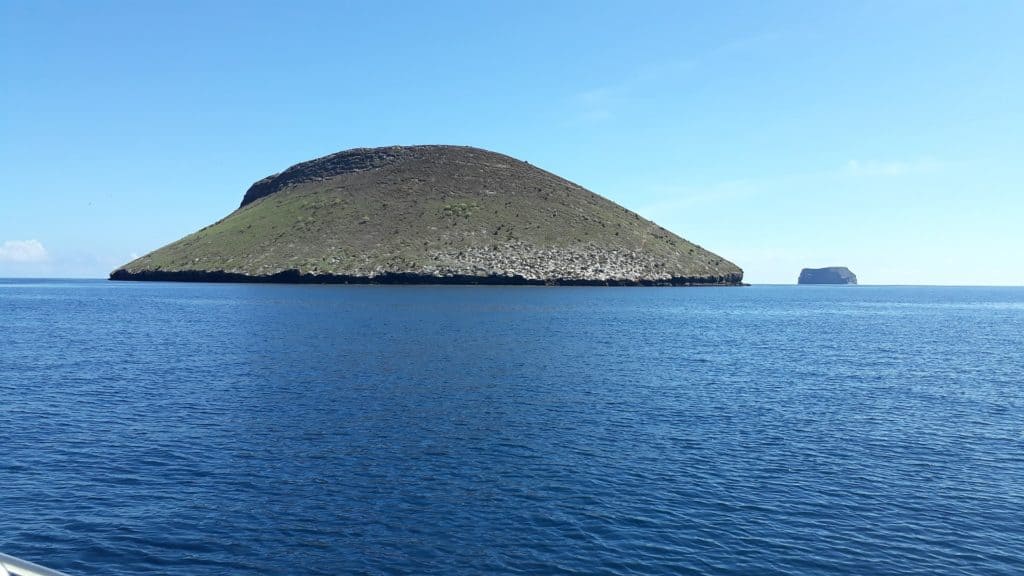
Mashpi Lodge: It is a steaming, breathing and living place. To descend and enter the reserve is to discover life’s hidden wonders. It is a universe unto itself, where flora and fauna surround and dance around you. Mashpi is intended to immerse you in the world of the surrounding forest, acting as a luxurious retreat amid breathtaking views. The lodge’s rooms are spread across three different floors, each with floor-to-ceiling windows that ensure immersion regardless of height.
Ground-level rooms provide views of the incredible forest floor, while mid and high floors provide access to the stunning canopy. To accommodate different size groups, the room size can be mixed and matched. Rooms provide a soothing experience that ensures your rest after a day of incredible activities, regardless of the floor, room or mixed accommodation you choose. Prices vary depending on the room and the things the room has to offer.
Hotel San Vicente Galapagos: It is a three-star hotel and restaurant. It is a 4-minute walk from the beach. Hotel San Vicente Galapagos lies on Isabela Island which is the largest island in the Galapagos. It offers free wifi in public areas and air-conditioned guestrooms. The hotel features outdoor furniture and a garden but there is no parking available. There are also bike tours, walking tours, and hiking tours with additional charges. The restaurant offers a special diet menu on request. The hotel also offers airport drop-off with an additional charge. It also features daily housekeeping, shuttle service, room service and express check-in/check-out. There are a designated smoking area available and non-smoking rooms.
The hotel features 5 room types. The triple room features 1 large double bed and 2 single beds. The standard king room features 1 large double bed. The twin room features 2 single beds. The economy quadruple room features 2 single beds as well. Superior double or twin room with city view features 1 extra-large double bed. Pets are not allowed in the hotel. Prices may vary depending on the room type and facilities. MasterCard, Visa, Discover and American Express are accepted in the hotel.
La Casa de Marita: It is an ideal hotel for couples. If you are looking for a honeymoon getaway or want to spend a nice time with your significant other, then you need a hotel that has a lot of things to offer. An ideal hotel for couples would have cute rooms, great views, relaxing areas and of course great food. La Casa de Marita has all the fesutres for couples. It is a three-star beach-trend hotel and restaurant near Galapagos National Park. It is located 450 metres from the centre of Puerto Villamil. You can find some of the amazing nearby attractions including, Iglesia Cristo Salvador.
The hotel offers free public parking nearby, free high-speed internet, free pool/beach towels, free breakfast, a beach, a bicycle rental, books, DVDs, music for children, and an open-air bath. The hotel has six room types you can choose from, ranging from 30 square metres to 50 square metres. Most of the rooms have air conditioning, a private bathroom, a flatscreen tv, a mini bar, free toiletries, a shower, a private entrance, a refrigerator, a wake-up service, a wardrobe, a clothes rack and more. Prices vary depending on the room and the things the room has to offer.
Twin Hotel Galapagos: It is ideal for work trips. If you are travelling for work or a business meeting, then you are probably travelling alone. Because of our busy lives, we do not have much time on our own. That’s why you need to make the most of it. All that you need is a hotel that is easy to access, has a good location, has meeting areas and a comfortable bed. The Twin Hotel features all of that.
The Twin Hotel is a family-friendly hotel with one outdoor pool connected to the convention centre near Galapagos National Park. It is located 6 kilometres from the centre of Peurto Ayora. You can explore the nearby attractions including, Rancho Primicias, Santa Cruz Fish Market and Las Grietas. The hotel offers its guests free parking, free high-speed internet, a pool, a yoga room, a free breakfast, bicycles, boating, babysitting and more.
The hotel has 4 room types to choose from ranging from 18 square metres to 60 square metres. Most of the rooms have air conditioning, a private bathroom, a flatscreen tv, a mini bar, a balcony, a garden view, a pool view, a terrace, free toiletries, a shower, a seating area, and cable channels and more. Prices vary depending on the room and the things the room has to offer.
El Descanso del Guia: It is the best high-end luxurious hotel. It is ideal for work trips. If you are travelling for work or a business meeting, then you are probably travelling alone. Because of our busy lives, we do not have much time on our own. That’s why you need to make the most of it. All that you need is a hotel that is easy to access, has a good location, has meeting areas and a comfortable bed. The El Descanso del Guia feature all of that.
The El Descanso del Guia is a 3.5-star hotel with an outdoor pool near Galapagos National Park. It is located 1.6 kilometres from the centre of Puerto Ayora. You can enjoy the nearby attractions including restaurants. Among other things, the hotel offers its guests free parking, free high-speed internet, 12 guest rooms, daily housekeeping, a restaurant, a bar, an outdoor pool, a rooftop terrace, and more.
The hotel has 5 room types to choose from ranging from 30 square metres to 63 square metres. Most of the rooms have air conditioning, a private bathroom, a flatscreen tv, a mini bar, a balcony, a garden view, a pool view, a landmark view, a terrace, free toiletries, a shower, towels, a seating area, and more. Prices vary depending on the room and the things the room has to offer.
La Zayapa: It is a budget hotel. If you are on a budget and want to spend your hard-earned money on activities in Galapagos rather than pay a large amount of money for a room in a hotel. Then, La Zayapa is a great choice for you. Considering its price, it offers everything you would need and has a good location. It is the best value-for-money hotel in Galapagos.
La Zayapa is a 3.5-star beach hotel with a bar/lounge near Galapagos National Park. It is located 250 metres from the centre of Puerto Baquerizo Moreno. You can enjoy the nearby attractions including Immaculate Conception Cathedral, El Albatros and Swordfish fountain. Among other things, the hotel offers its guests free public parking nearby, free high-speed internet, a free breakfast, a beach, canoeing, a shuttle bus service, a non-smoking hotel, shops, and more.
The hotel has 3 room types to choose from ranging from 23 square metres to 26 square metres. Most of the rooms have air conditioning, a private bathroom, a flatscreen tv, a mini bar, a balcony, a garden view, a pool view, a landmark view, a terrace, free toiletries, a shower, towels/sheets, a hair dryer, a seating area, a cable channels, wardrobe or closet and more. Prices vary depending on the room and the things the room has to offer.
EB Hotel By Eurobuilding Quito Airport: It is the second of the EB brand from the Eurobuildong Hotels chain. It is known for providing 5-star service and a luxury design experience across all 9 of its properties in different countries. The hotel has been specifically designed for business travellers, tourists, and families in general. It provides comfort, service and spaces that will inspire you to make your stay enjoyable.
Guestrooms and suites have been designed with the modern traveller in mind, with all the comforts you desire, luxurious linens, adjustable comfort sleep system beds and flat-screen tv along with an impressive set of facilities to help you do what you need to do in style. Prices vary depending on the room and the things the room has to offer.




